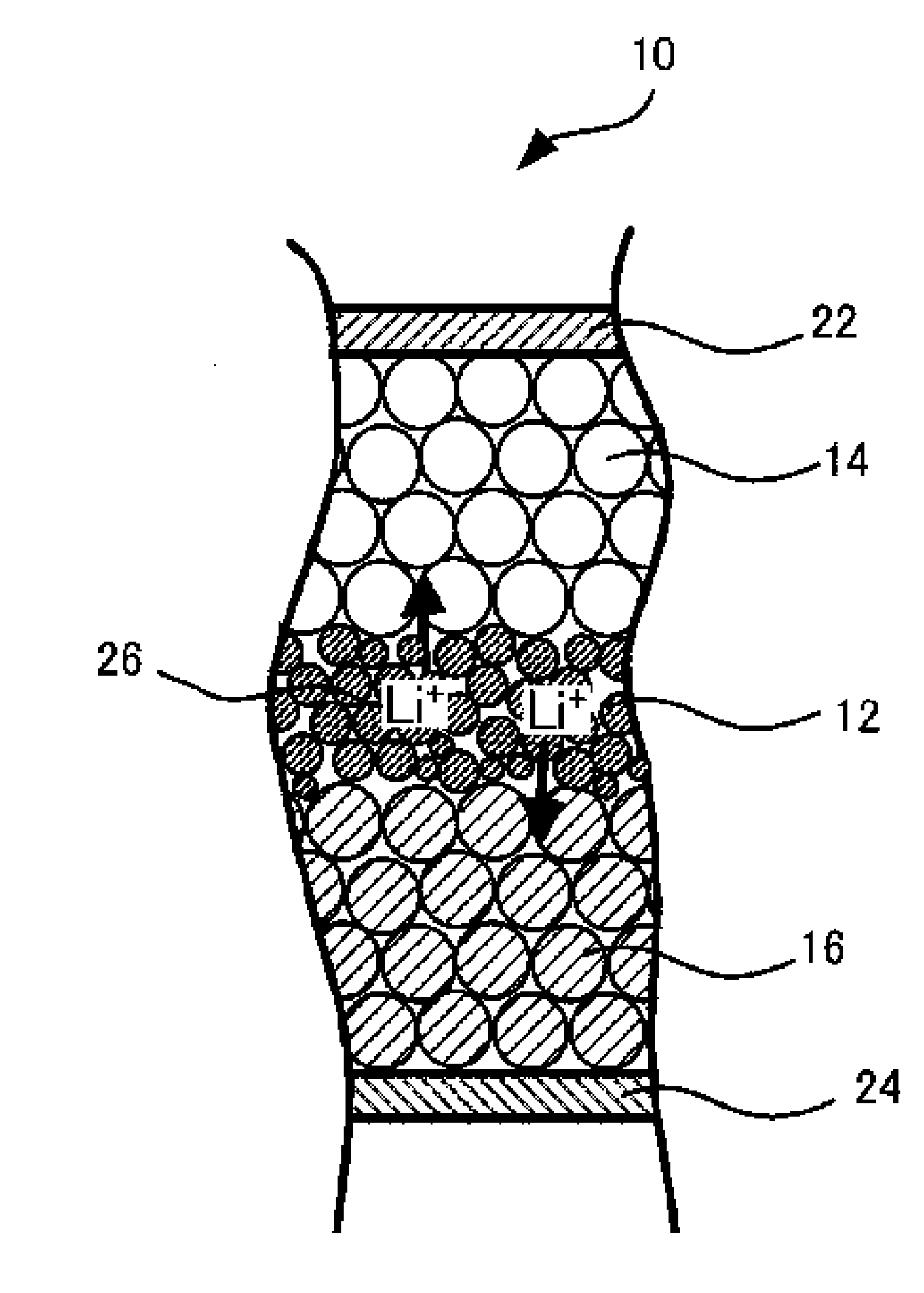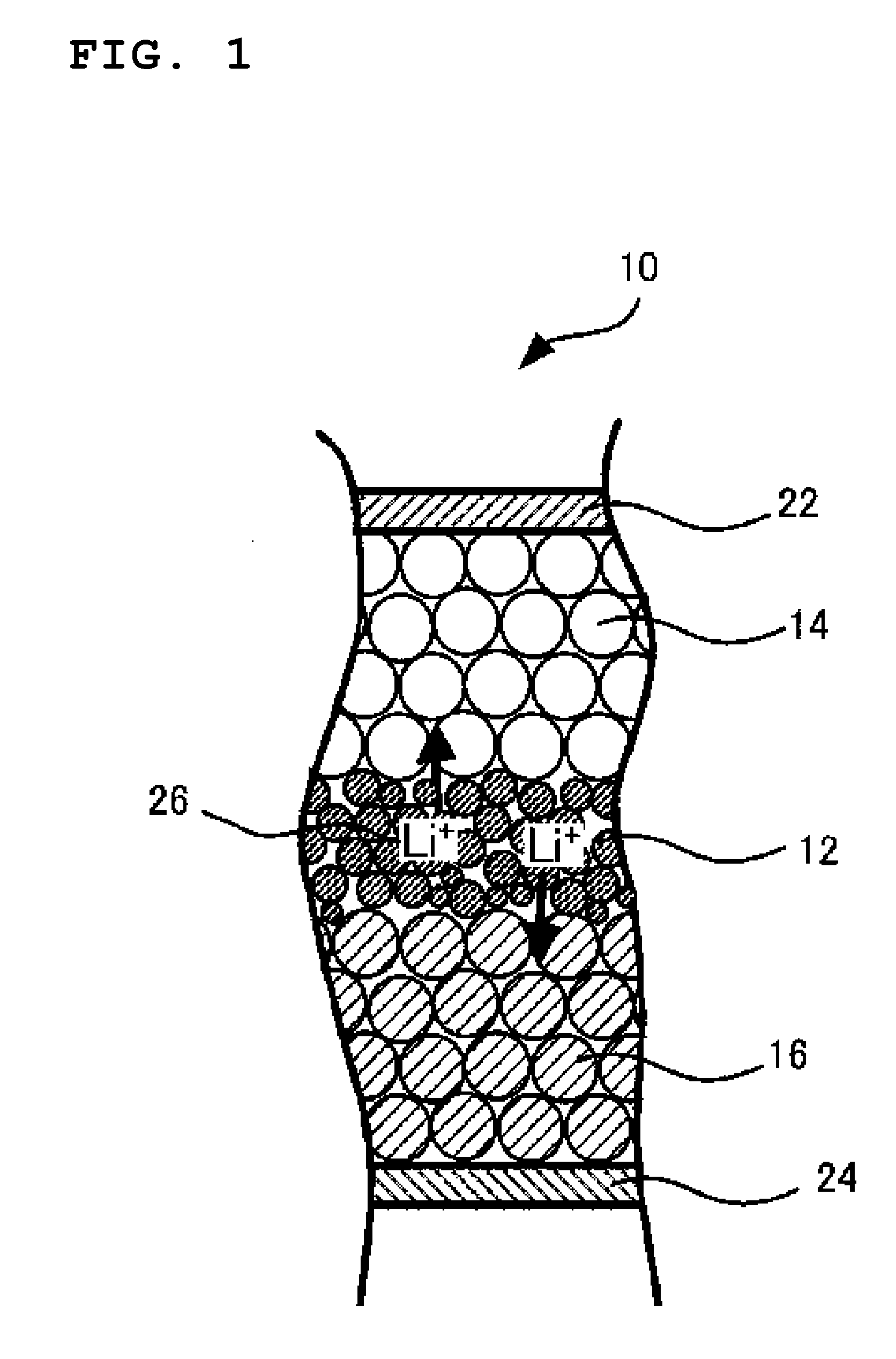Method for manufacturing lithium ion secondary battery
a lithium ion secondary battery and manufacturing method technology, applied in the direction of cell components, final product manufacturing, sustainable manufacturing/processing, etc., can solve the problems of poor productivity and inability to sinner all green sheets integrally
- Summary
- Abstract
- Description
- Claims
- Application Information
AI Technical Summary
Problems solved by technology
Method used
Image
Examples
example 1
[0042]Applying the processes as described above, a battery was prepared in the way to be described more specifically below.
[Preparation of Amorphous Oxide Glass Powder]
[0043]The following raw materials were used: H3PO4, Al(PO3)3, and Li2CO3, manufactured by Nippon Chemical Industrial Co., Ltd.; SiO2, manufactured by Nitchitsu Co., Ltd.; and TiO2, manufactured by Sakai Chemical Industry Co., Ltd. These materials were weighed out to provide a composition of 35.0% P2O5, 7.5% Al2O3, 15.0% Li2O, 38.0% TiO2, and 4.5% SiO2, respectively in mol % as the oxide, and mixed uniformly, and thereafter placed in a platinum pot and heated and fused for 3 hours while stirring at a temperature of 1500° C. in an electric furnace to obtain a glass melt. The glass melt was thereafter quenched as the melt being heated was dripped from a platinum pipe mounted on the pot into running water at the room temperature to obtain an oxide glass.
[0044]The oxide glass was milled by a jet mill manufactured by Kurimo...
example 2
[0052]A green sheet laminate before sintering was prepared using the same composition and in the same method as described in Example 1.
[0053]The laminate prepared as described above was placed on a dense alumina setter (manufactured by NORITAKE CO., LIMITED) having a 100-mm square size, a 2-mm thickness, a porosity of not exceeding 1%, the maximum pore diameter of 0.2 μm, and an average pore diameter of not exceeding 0.1 μm as the positive electrode side of the laminate was faced down so as to make the positive electrode green sheet contact the setter. A highly gas permeable alumina setter (manufactured by KIKUSUI Chemical Industries Co., Ltd.) having a porosity of 35%, the maximum pore diameter of 120 μm, and an average pore diameter of 80 μm was placed on the negative electrode. The negative electrode green sheet was made to contact with the highly gas permeable setter. In this state, the laminate was heated up to 400° C. in an electric furnace to eliminate the binder, dispersant,...
PUM
| Property | Measurement | Unit |
|---|---|---|
| Pore size | aaaaa | aaaaa |
| Pore size | aaaaa | aaaaa |
| Pore size | aaaaa | aaaaa |
Abstract
Description
Claims
Application Information
 Login to View More
Login to View More - R&D
- Intellectual Property
- Life Sciences
- Materials
- Tech Scout
- Unparalleled Data Quality
- Higher Quality Content
- 60% Fewer Hallucinations
Browse by: Latest US Patents, China's latest patents, Technical Efficacy Thesaurus, Application Domain, Technology Topic, Popular Technical Reports.
© 2025 PatSnap. All rights reserved.Legal|Privacy policy|Modern Slavery Act Transparency Statement|Sitemap|About US| Contact US: help@patsnap.com


